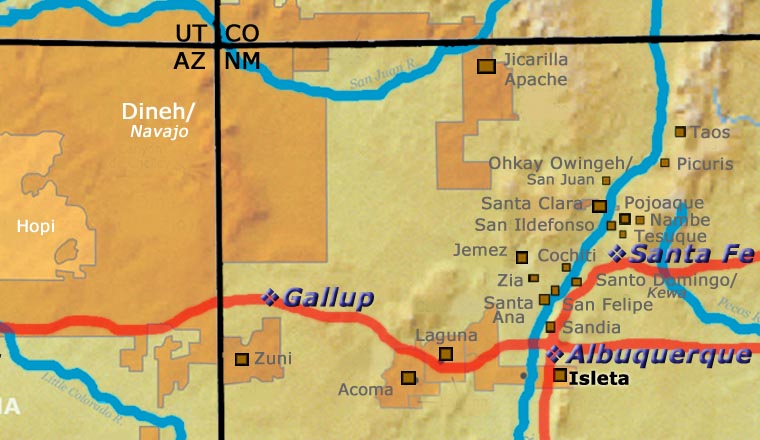Isleta Pueblo Pottery
The 1680 Pueblo Revolt virtually ended production of pottery at Isleta and it never really resumed. In the upheavals over the next hundred years, the entire Isletan design vocabulary was lost.
The advent of the railroad in New Mexico was almost the end of the Isleta community as so many of the men went to work for the railroad. Traders came in and convinced local potters, basket-weavers and silversmiths to make items for the tourist trade. Under the onslaught, pueblo artisans suffered until they stopped making much of anything and shifted their income to other avenues.
There was a surge of tourists in the 1920s that evoked a purely “for the tourist market” surge in the making of pottery. However, the pottery was mostly being made by Laguna migrants living at Isleta Pueblo. They got their base clay locally but they used a white slip and red and brown paints, all of which they bought from family at Laguna. As Isleta had no design tradition to work with, all the designs painted on the many different items made specifically for tourists were simple Laguna designs. There were ashtrays, small baskets with twisted handles, figurines, bowls with bird heads, pointy-toed moccasins, cigarette lighter cases, all kinds of knick-knacks and other stuff. The market for these grew large in the early 1920s and tapered off in the 1940s.
While the remaining residents managed to hold on to some of their social and religious practices, other elements of their culture almost disappeared. Pottery making is one of those traditions that barely survived. Like most other pueblos there was a move to bring pottery making back to Isleta in the 1950s and 1960s. A few Isleta potters became established making figures, wedding vases and seed pots but their ranks have not really increased since the early 1990s.
Today, making pottery the traditional way is practiced by only a few potters and their close family members.
